#migration period
Text
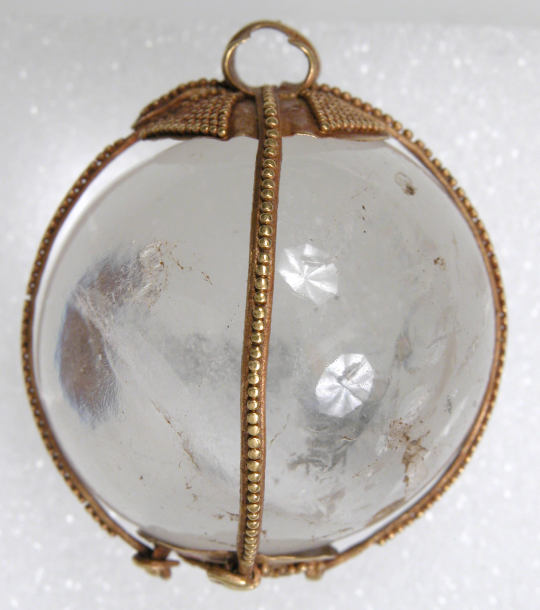

Gold and rock crystal pendant, Hunnic or Frankish, 4th-5th century AD
from The Metropolitan Museum of Art
235 notes
·
View notes
Text

Belt Buckle from Maria Ponsee, Austria dated between 500 - 800 CE on display at the Kunsthistorisches Museum in Vienna, Austria
With almost 100 graves, Maria Ponsee is the largest Langobardian burial site in Austria. It was excavated in 1965 and 1966 by the Federal Monuments Office and is one of the few cemeteries from this period to have been completely examined. Three ethnic groups buried their deceased here: Langobards, Thuringii and Romani or Suebi. What remains in these graves is what was left by grave robbers over the centuries.
Photographs taken by myself 2022
#art#archaeology#history#fashion#austria#austrian#migration period#kunsthistorisches museum#vienna#barbucomedie
227 notes
·
View notes
Text
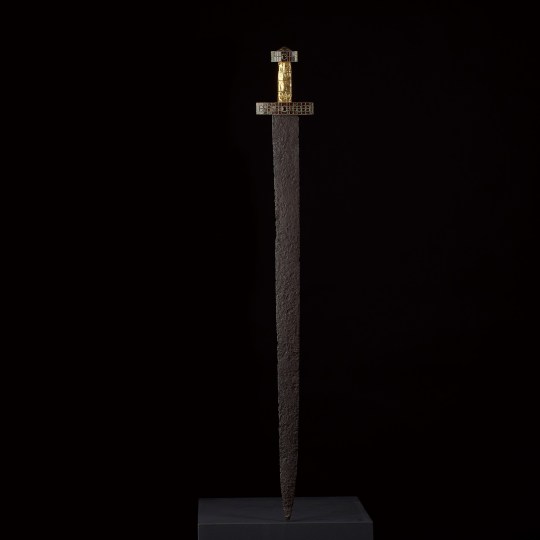

Sword with hilt, pommel, and crossguard decorated with gold and garnets, Merovingian or Late Roman, 5th-6th century AD
from De Backer Art Belgium
477 notes
·
View notes
Text
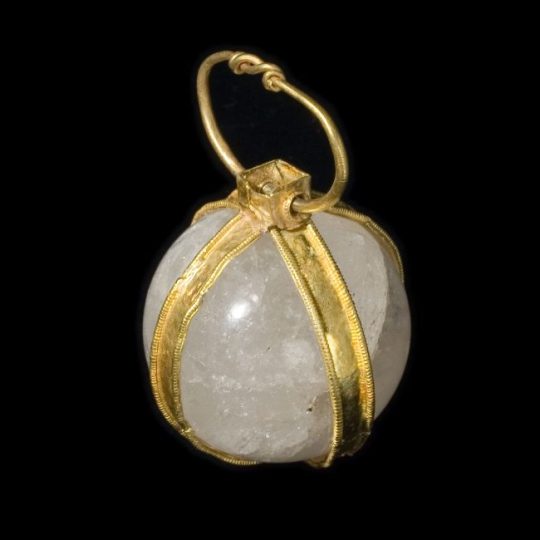
Gold and rock crystal pendant, Merovingian, late 5th-6th century AD
from Phoenix Ancient Art
768 notes
·
View notes
Text
After some (very justified) criticism to my definition of prehistoric (see tags) here’s another poll:
#ain’t no one got time for the sub classification of the modern period. I’m sorry guys#I’m also not dividing the Palaeolithic or the Iron Age sooo#archaeology#archeology#poll#polls#polling#Palaeolithic#stone age#paleolithic#Mesolithic#Neolithic#Bronze Age#chalcolithic#iron age#viking age#migration period#medieval period#middle ages#modern period#own post#prehistory: before written record. my geographical framework: southern Scandinavia. south Scandinavian prehistory: up to viking age
101 notes
·
View notes
Text
The Ethnogenesis of the Alemanni
Bachelor’s Thesis in the Course Cultural Studies at the FernUniversität in Hagen
Grade: 1.0
By Marcel Biehringer (Translated from German by AI, proofread by the author)
1 Introduction
Questions about one’s own identity are an essential part of being human. How an individual defines himself or herself also depends on the social group to which he or she feels that he or she belongs (cf. Brather…

View On WordPress
#Alamanni#Alemannen#Alemanni#Ancient History#Antiquity#german history#History#Migration Period#Roman Empire#Roman History#Suebi
3 notes
·
View notes
Photo

I don’t know yet what to do with the left page.
I kinda like it white, but there could also be a dog trotting behind them or something else entirely.
#visigoths#magazine#illustration#donkey#mother and child#cooking utensils#late antiquity#early middleages#migration period
6 notes
·
View notes
Text

Brooch B3045
Migration period brooch from Jæren, Norway.
Little is known about the circumstances of its discovery but the "find" description says:
"found in Jæderen, but it is unknown where and under what circumstances. Judging by its worn condition, it has hardly been in a grave, but probably right on the surface of the earth exposed to weather and wind"
The decorations on this one are very typical of this type of brooch. The swirly owl looking decorations on the square part, the stylized faces and the two horses on each side, but the way they've done the big eyes with the eyelids is kind of goofy and unique <3
#brooch#archeology#ancient#ancient civilizations#iron age jewellery#iron age#migration period#silver jewelry#silver cast#norse#illustration#gripping beast#relief brooch#norway#jæren#fibula#old norse#ancient world#sketchbook#merovingian#archaeology#grimmborg#details
20 notes
·
View notes
Photo
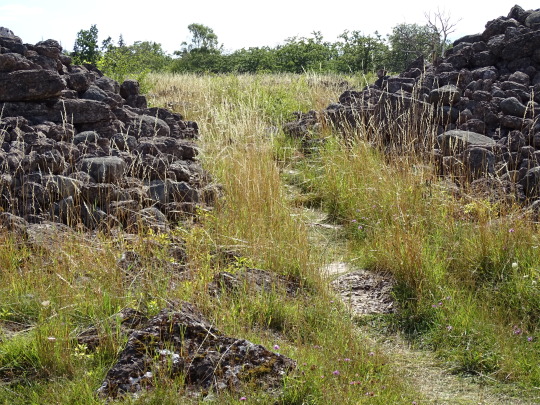

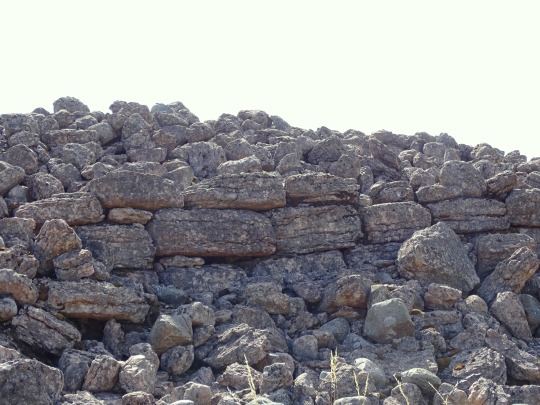

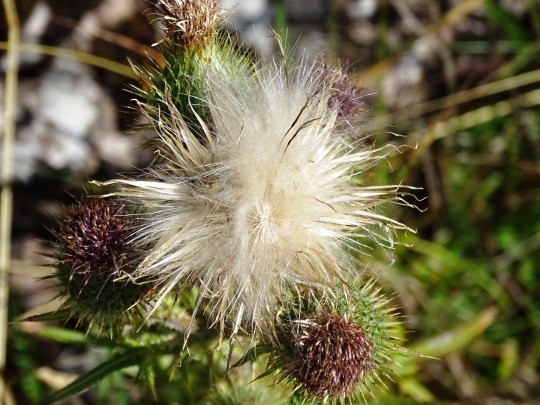



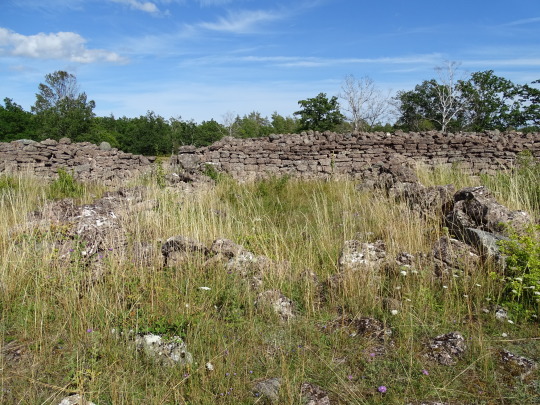

Ismantorp Fortress, Sweden (No. 7)
The theories about Ismantorp’s usage have been divided. A fortification speaks of a protection function but also the large number of ports represents a deficit weakness. Ismantorp has been compared with the big Slavic castles which both functioned as protection and as shrines. Other resources consider the castle as a part of other stock of castles on Öland. Ismantorp would according to this theory unite in a form of national defense with a united organization.
Ismantorp’s Castle lies at the bounds of five parishes and in the middle of the forest. To get to Ismantorp you drive via a small road, Långlöt-Vedby, or from the 136 via Rälla towards Högsrum and continue east. Signs will show the way towards a parking lot a few hundred meters from the castle.
Source
#Ismantorp Fortress#Ismantorps fornborg#Migration Period#ruins#gate#limestone wall#flora#archaeology#Sweden#Swedish history#travel#Öland#Kalmar County#forest#landscape#nature#countryside#Sverige#summer 2020#Scandinavia#Northern Europe#free admission#vacation#landmark#tourist attraction#grass#tree#woods
5 notes
·
View notes
Text
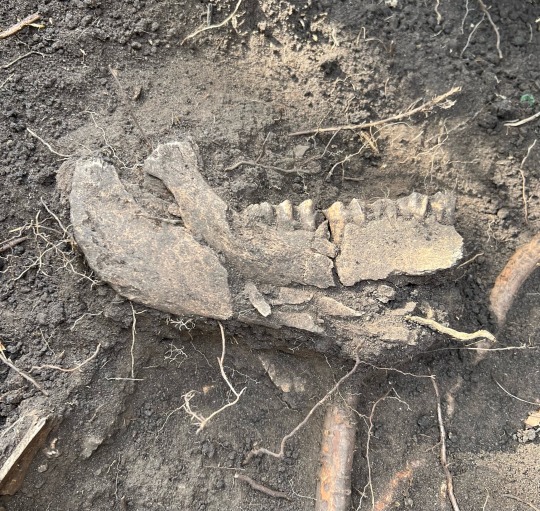
Jaw of a boar, ca. 400 - 550 ad.
One of the many more or less intact skulls we found during this autumn’s excavation in Gamla Skogsby, Sweden.
#archaeology#archaeological#osteology#archaeoblr#skull#field work#iron age#migration period#history#excavation
5 notes
·
View notes
Text


Spangenhelm Helmet from Steinbrunn, Austria dated to around 500 CE on display at the Weltmuseum in Vienna, Austria
This helmet basically shows the same design features as the six-piece Spangehelm from Sveti Vid in Dalmatia. It was excavated in 1965 in Steinbrunn in Burgenland, the largest preserved group of helmets from the entire Middle Ages. Culturally, the Spangenhelm largely corresponds to that of the Late Roman and Eastern Roman army, in which both Germanic soldiers and nomad cavalrymen from Iran served.
The close connection between this group of helmets and the Ostrogothic court of Theodoric the Great is possible, but cannot be proven by current evidence. Theodoric spent his youth as apolitical hostage in Constantinople and gained the favour of Emperor Leo I. It is possible these helmets were gifts from the Eastern Roman Empire.
Photographs taken by myself 2022
#armour#art#fashion#medieval#migration period#eastern roman empire#byzantine empire#austrian#austria#military history#archaeology#weltmuseum#vienna#barbucomedie
116 notes
·
View notes
Text
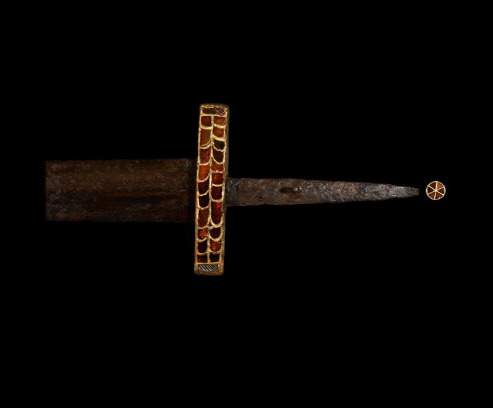
Migration period sword with garnet jeweled hilt, 5th century AD
from Timeline Auctions
257 notes
·
View notes
Text
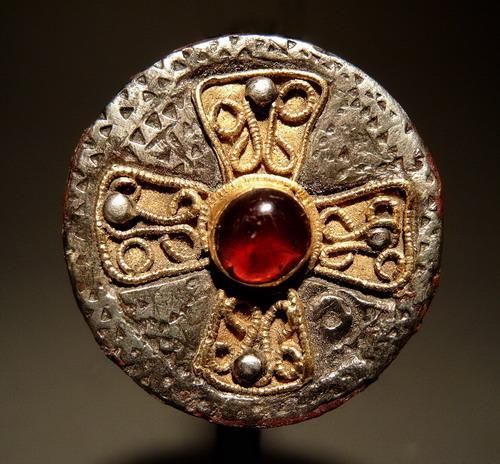
Gold, silver, and garnet brooch, Merovingian, late 6th - early 7th century AD
425 notes
·
View notes
Text
Europe ca. 476 CE
Europe ca. 476 CE
Picture: Germanic Kingdoms in Europe after the fall of the Western Roman Empire.
Although the Germans were certainly less sophisticated than their contemporary Romans, Greeks, Egyptians or even the neighbouring Celts, which to the Mediterranean world were already considered barbarians, they were to some degree responsible for the fall of the Western Roman Empire. The Kingdoms which they built…

View On WordPress
0 notes
Text
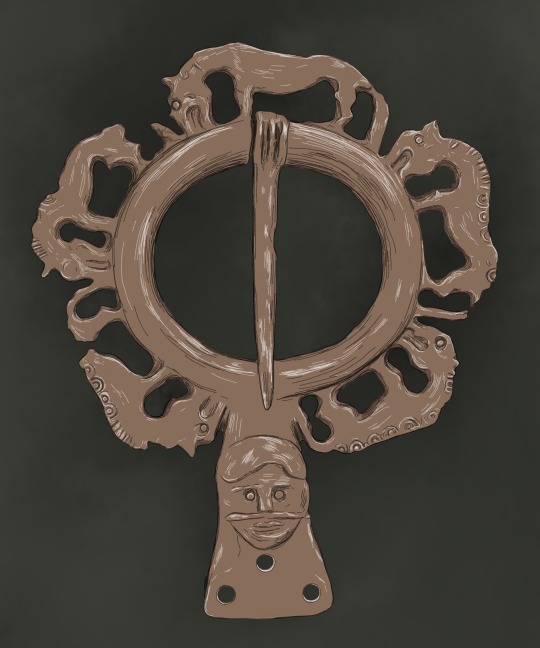
A Horse Themed Ring Brooch
Ring brooch T9826 from a very rich, 5th century woman's grave in Trøndelag, Norway.
This one immediately caught my eye as i was scrolling an online catalog (unimus.no). Kind of similar in the human part of the brooch, to c4640, but otherwise a very different design from other brooches from this era. Especially ring brooches.
the very old catalog text said something about it being attached to a strap through those holes at the bottom ¯\_(ツ)_/¯
there's also a pendant from about the same time that kind of matches this stylistically with a very similar horse and a part that resembles the top part of the needle.
the pendant was also compared to the style on the Horns of Gallehus, which i really recommend taking a look at they are STUNNING!!!!!
#iron age#archeology#norse#migration period#merovingian#viking age#brooch#annular brooch#ring brooch#ancient civilizations#norwegian history#trøndelag#viking age jewellery#viking#horse motif#horses#archaeology#grimmborg#details
18 notes
·
View notes
Text
The title of my blog originates with a runic inscription, and it is fitting that my first blog post would cover that.
From Wikipedia:
“The Bergakker inscription is an Elder Futhark inscription discovered on the scabbard of a 5th-century sword. It was found in 1996 in the Dutch town of Bergakker, in the Betuwe, a region once inhabited by the Batavi. There is consensus that the find dates from the period 425-475 and that the inscription is either the singular direct attestation of Frankish (Franconian) or the earliest attestation of Old Dutch (Old Low Franconian).”

Additionally, here is an entry from ‘Texts and Contexts of the Oldest Runic Inscriptions’ (Looijenga, 2003) :


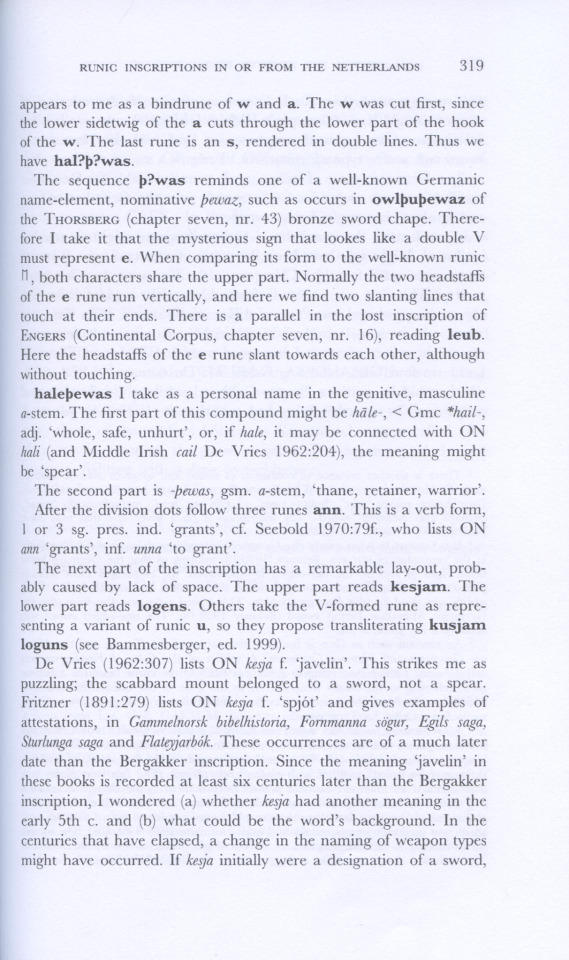


#runes#runic#bergakker#frankish#frisian#history#migration period#vikingage#merovingian#carolingian#europe#vikings
1 note
·
View note